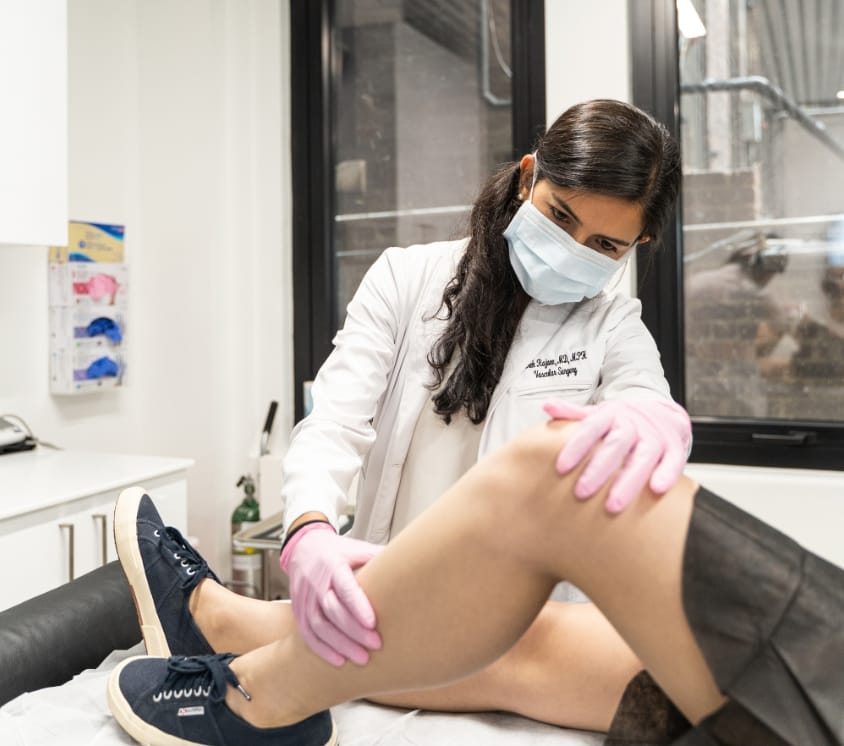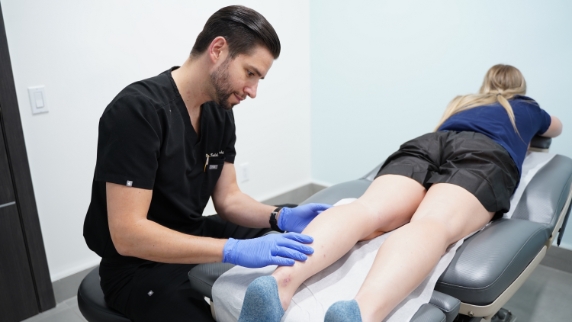Reason 1: Correcting the defects in your veins cannot be done from outside
To understand why vein disease needs treatment, you need to know what causes vein disease in the first place. The veins in your legs return blood back to your heart. As this job needs to be done against gravity, the top of your veins have tiny, one-way valves attached. The job of these valves is to see that the impure blood that goes past to heart does not fall back again into the leg. In vein disease, also known as chronic venous insufficiency, these valves malfunction. As a result, blood begins to pool in your leg veins, causing them to expand under pressure. the pressure also forces blood to flow into smaller veins and cause them to appear under the skin as fine spider-webs (spider veins), or as twisted, bulging ropes (varicose veins).
Since the main defect is within the vein itself, this problem cannot be corrected from the outside. The only way to stop blood from pooling in the leg is to ensure that blood no longer travels through the defective vein in the first place. This can only be achieved if you visit a vein specialist; Lifestyle changes and home remedies will not have any effect on the defective vein itself.

Reason 2: Getting your vein disease treated can make you look and feel better.
Both varicose veins and spider veins look unsightly. You may also notice red, beefy discoloration on the skin overlying the vein. Besides the appearance, these vein conditions are also associated with several uncomfortable symptoms, such as heaviness, aching, or even cramping in your legs. Your ankles may be swollen and you may suffer from generalized fatigue. Overall, vein disease can dramatically reduce your quality of life, without you being aware of the actual cause. Treated varicose veins would make you feel less tired, and more capable of an active lifestyle. The visibility of the veins also disappears over time, making your legs look better and younger than before!
Reason 3: Left untreated, vein disease can cause serious consequences
Because vein disease causes pooling of impure blood in the legs, the flow of healthy blood to the legs is compromised, which impairs the body’s wound healing capabilities in this region. Even if you get a minor scrape or an abrasion, it may take ages to heal, and can even turn into a long-standing venous ulcer. A direct injury to the varicose vein itself can cause profuse bleeding that is difficult to control. Another serious complication is stagnation of blood in the leg veins, which can cause it to clot. If blood clots travel through circulation to reach the heart and lungs, there can be potentially fatal consequences.
Before your vein disease reaches these stages, it is essential that you get your vein disease evaluated and treated at a reputed vein treatment center.

What is the best treatment that works for vein disease?
The best treatment often depends on the type and extent of the vein disease that you have. Before determining the best possible mode of treatment, a vein specialist would examine your legs, and evaluate the condition of your leg veins using an ultrasound. Modern treatment for varicose veins or spider veins involves sealing the vein off so that blood can no longer flow through it. You will probably need one or more of the following treatment options.
Radiofrequency ablation (RFA):
The vein specialist will numb your skin and make a tiny nick over the vein. A radiofrequency catheter is inserted into the defective vein. When activated, the catheter delivers heat energy to the vein walls. This causes them to melt and stick together, which stops blood flowing through the vein. Once the vein becomes non0functinal, it eventually gets absorbed over time by the body.
VenaSeal:
Venseal is a unique, least invasive technique that treats vein disease quickly and effectively. Medicated glue is injected into the defective vein. This fuses the vein walls together and seals off the defective vein.
Endovenous Laser ablation (EVLA):
This is just like RFA, except that a laser fiber is used instead of a radiofrequency catheter. Laser energy may cause more discomfort during the procedure as compared to heat, so vein specialists prefer RFA on the whole.
Sclerotherapy:
This involves injecting a medicated solution, called a sclerosant, directly into your veins. The sclerosant irritates the vein calls, causing them to scar and stick together. The sclerosant works only in small areas, so it can only be used for smaller veins such as spider veins.
Varithena:
A medicated foam, similar to the sclerosant, is injected directly into your veins. The foam tends to disperse over a wider area, so it can be used for medium sized veins.
ClariVein:
This is a new technique, where a tiny catheter, that disperses sclerosant, is directly implanted into your vein. The catheter rotates in all directions, and moves throughout the length of the vein. This allows it to be used for the larger veins.
All the above vein treatment procedures are minimally invasive, and can be performed at the vein clinic in under an hour. They require practically no recovery time. To find out more about vein treatment, or to speak to one of our specialists, call (844) 690-1788, or book an appointment online.














